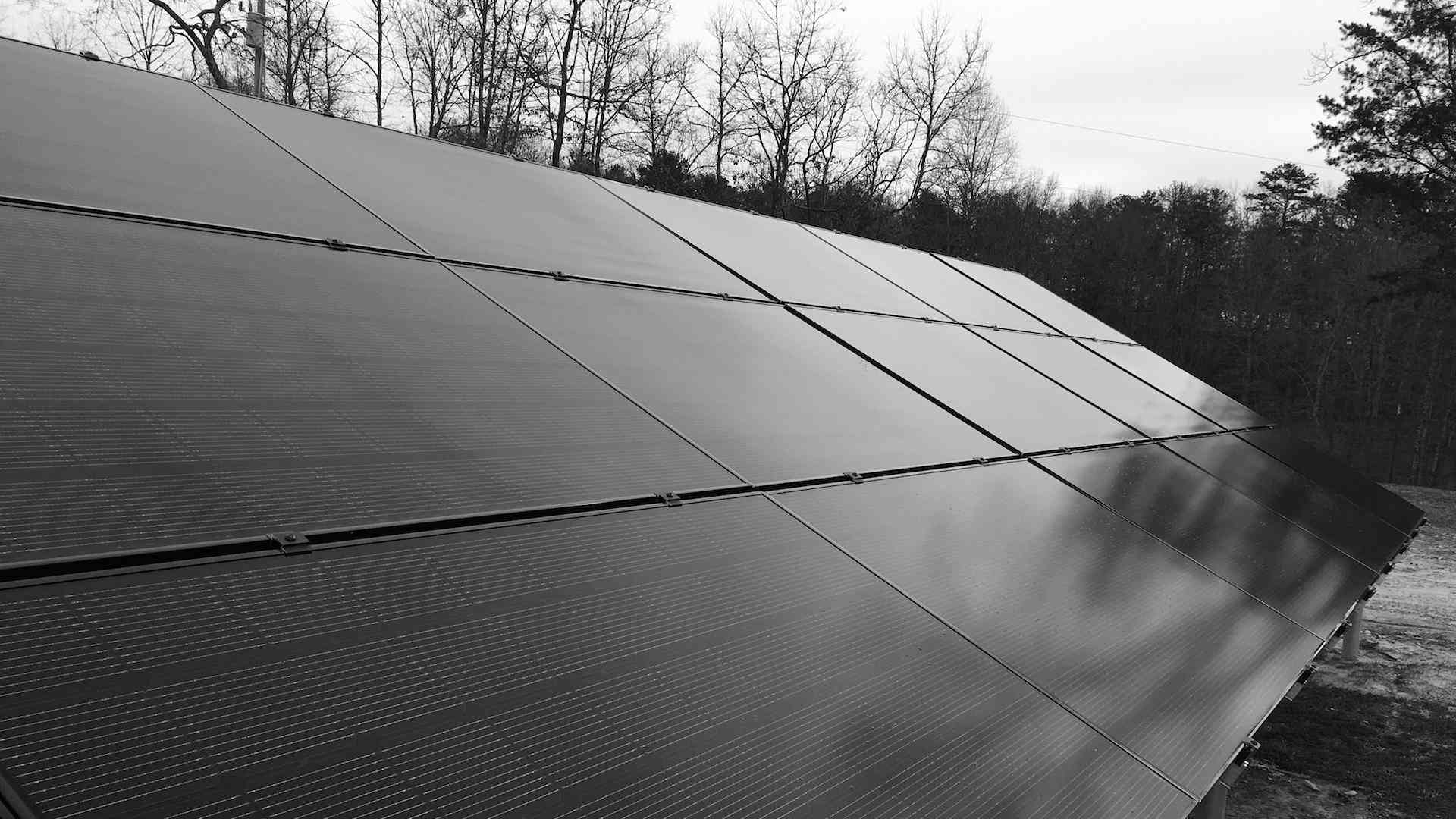
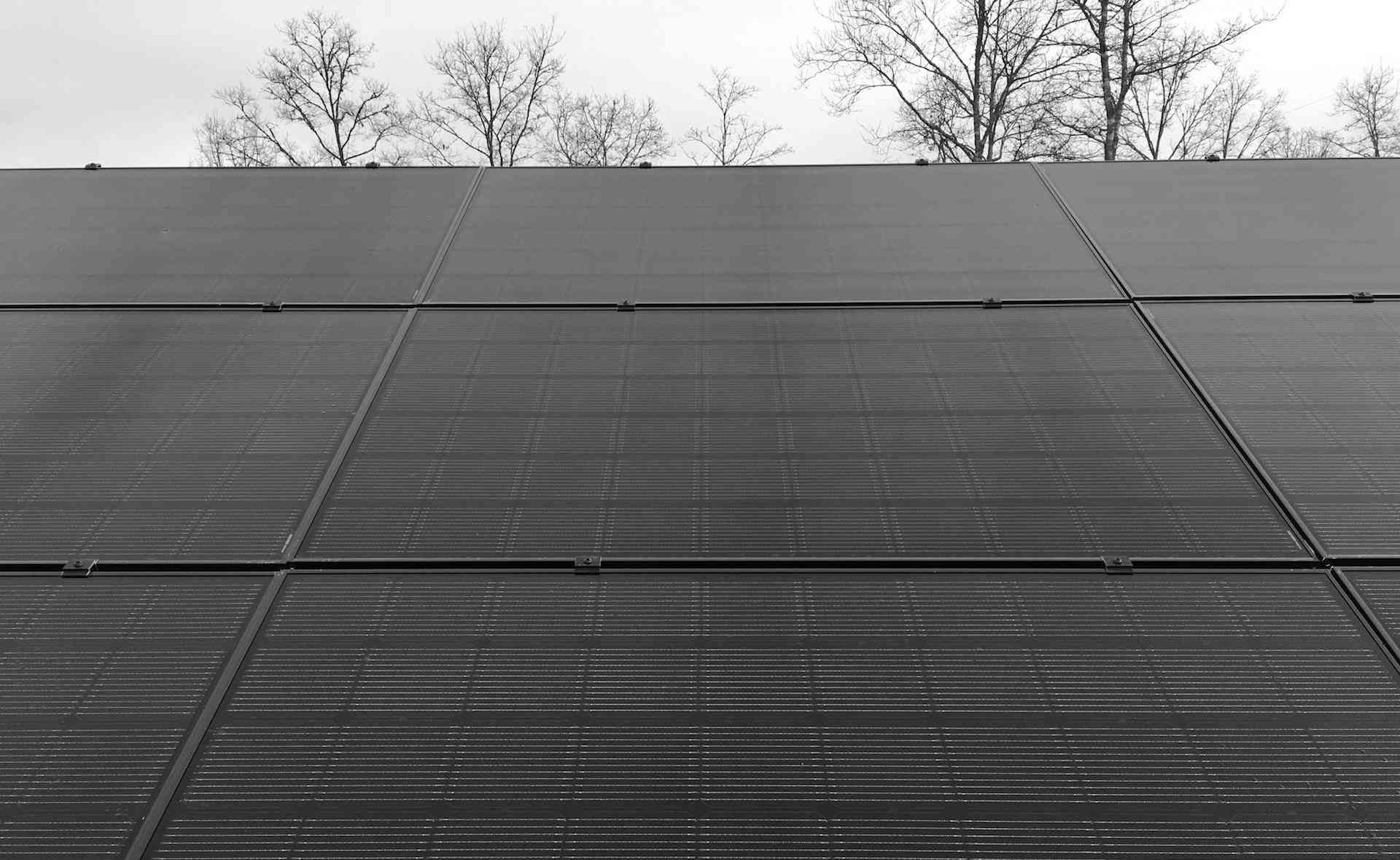
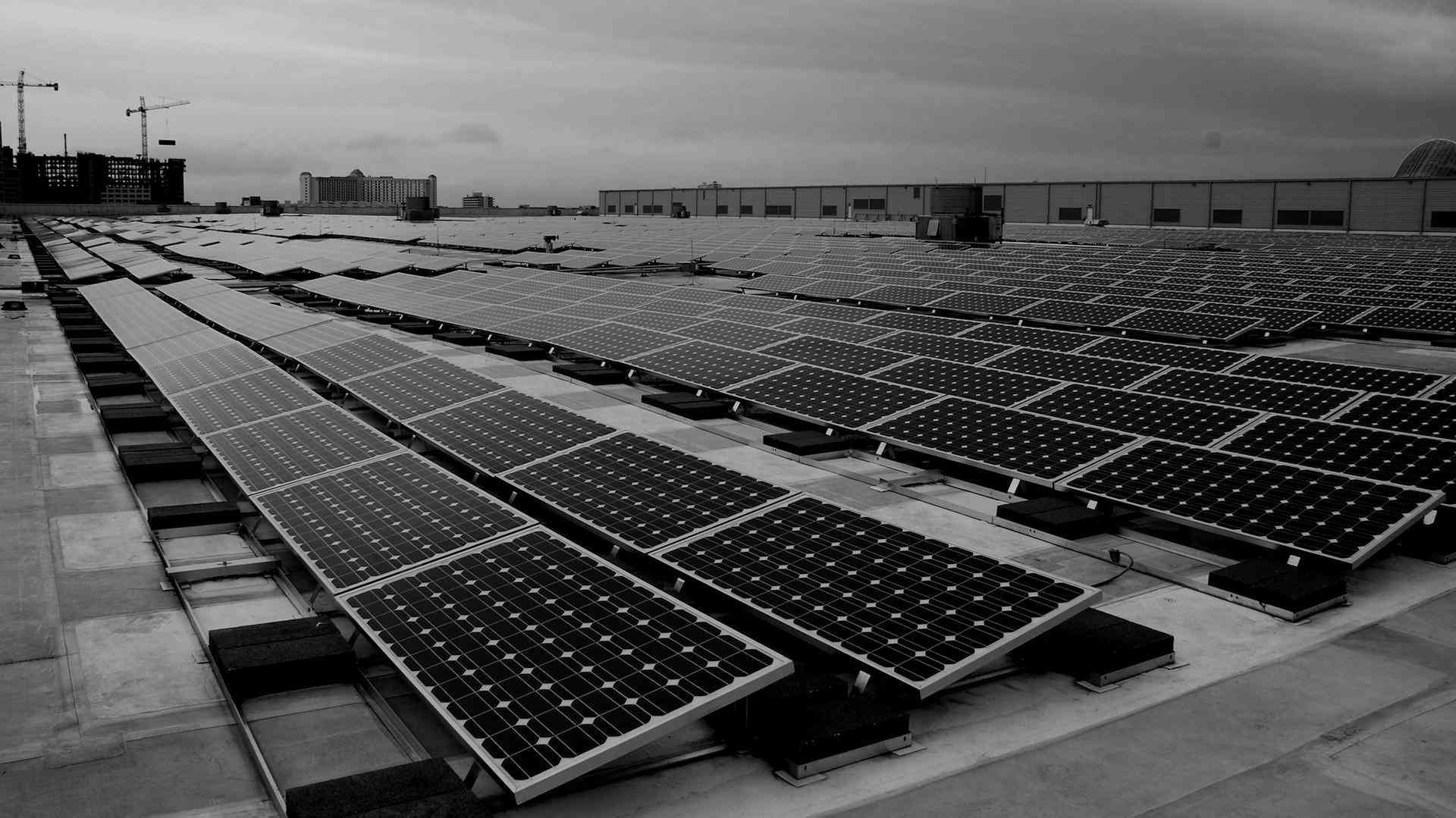
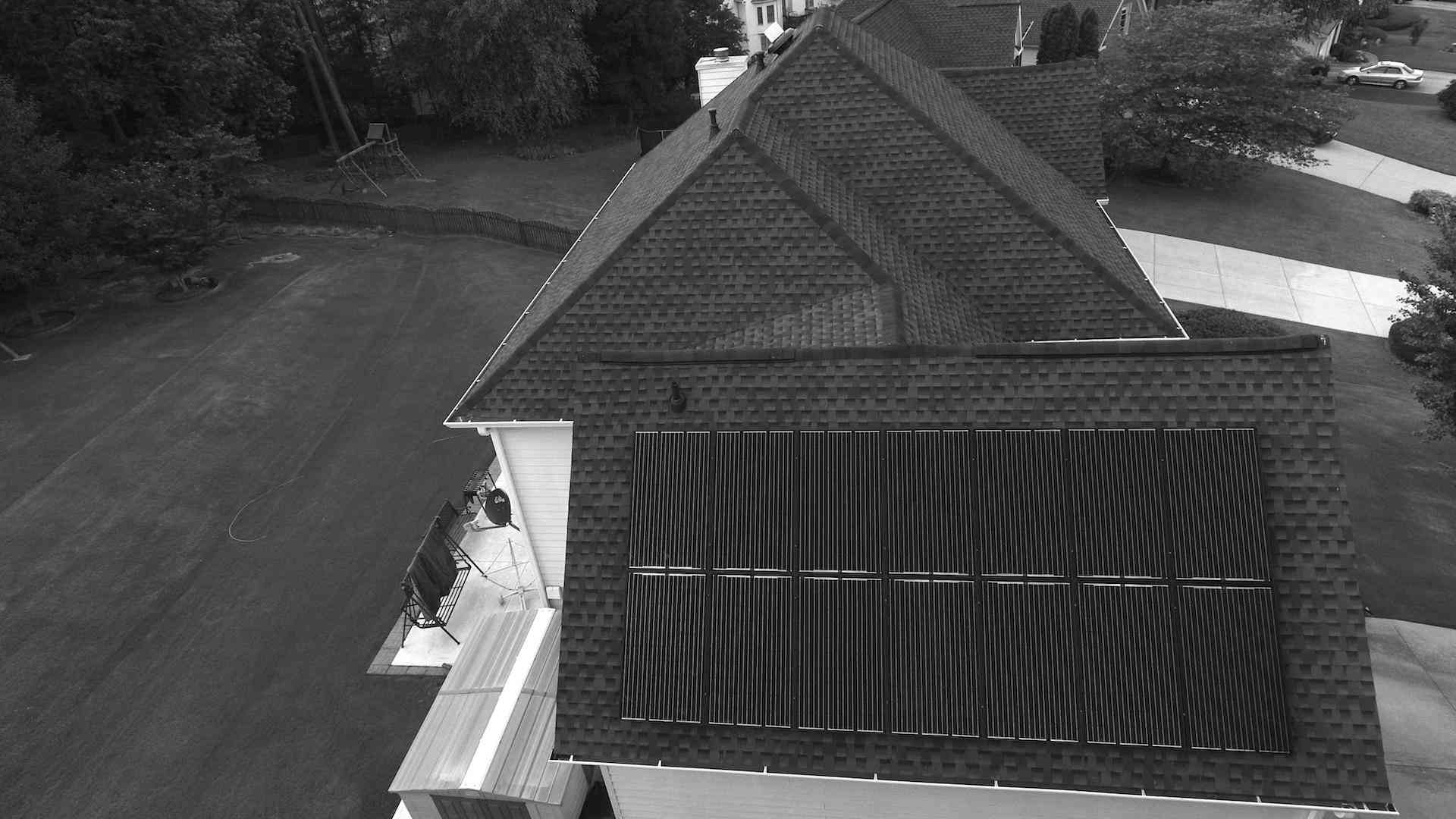
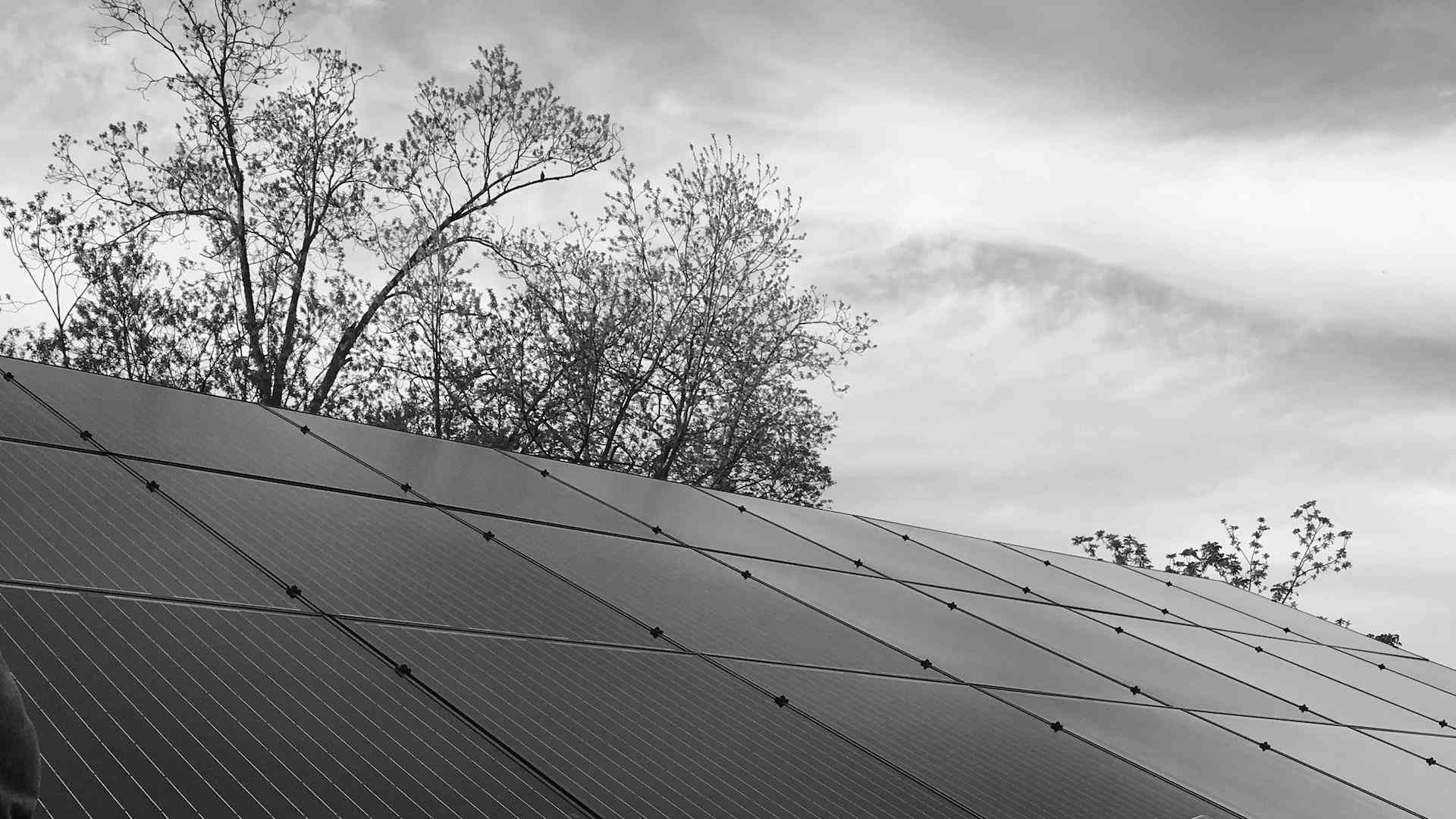
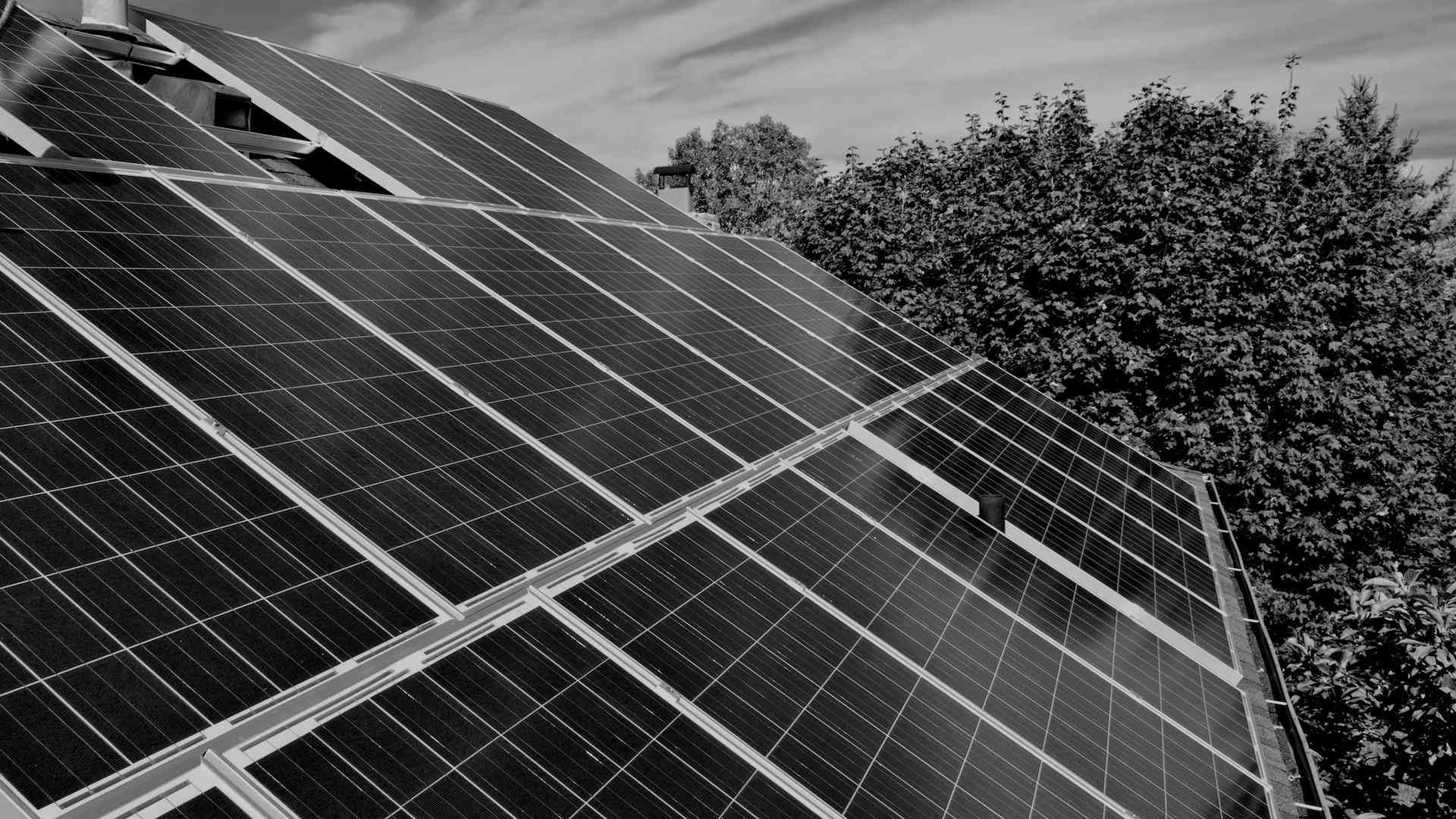
Call TRUESOLAR +1.888.466.1663

Solar Energy - The Source
Deep in the center of the sun, intense nuclear activity generates huge amounts of radiation. This radiation generates light energy of different wavelengths, from visible light to invisible wavelengths like infra-red and ultra-violet. This provides the earth with a reliable unlimited source of energy. All you have to do is put it to use.
The Photovoltaic Effect
Solar Power uses something called the photovoltaic effect (a.k.a PV) in which certain materials produce an electric current when exposed to sunlight. When sunlight hits the solar cell, it absorbs some of the sunlight which causes the semiconductor material in the cell to generate and electric current. The more sunlight that is absorbed by the solar cell, the greater the current generated.
This type of solar power generation is referred to as Photovoltaic Solar or PV Solar. This is different to solar hot water or solar heating systems, where the sunlight is used to heat water or air.
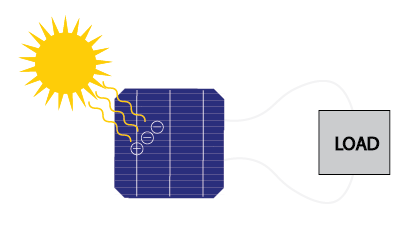
Cells, Modules, Arrays
The main components in a Photovoltaic (PV) Solar system are solar Modules, also known as solar panels. Modules are composed of individual solar Cells. A typical residential module is made up of 60 cells. Modules are groups together to form solar Arrays.
DC to AC Inverters
In order to use the electricity generated by a solar array, it first must be converted into the proper voltage and signal required by the load to be powered. In most cases, this will be AC current. For residential systems this will be a single phase 120/240V AC and for commercial this will typically be three phase 208V or 277/480V AC. The component in a solar system that performs this conversion is called an inverter. Inverters may be very large central inverters for converter huge commercial arrays, string inverters which handle smaller groups of PV modules or even micro-inverters that only convert DC voltage from a single PV module into AC.
Note that all ‘grid-tied’ inverters will automatically stop generating power to feed back into the grid when the grid is down.
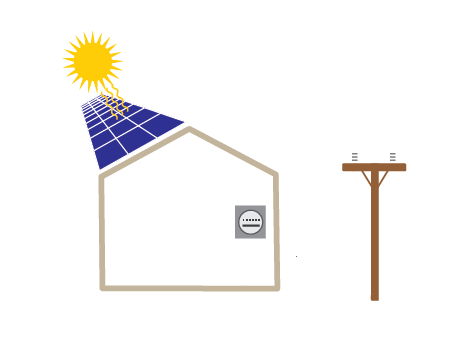
Grid-Tied Solar Systems
In a Grid-Tied solar system, solar panels generate electricity during the day to offset any power being used at that time. Any surplus electricity that is produced is fed in to the grid. The grid effectively acts as storage for the extra electricity generated. In the evening and night, when your solar energy system is not producing energy, you buy your power from the electricity company the usual way. Note that this type of system does not provide any backup power, if the grid is down (outage), your panels are not generating usable power. This is the most common type of solar installation.
Off-Grid Solar Systems
In an Off-Grid configuration, solar panels generate power, the energy is stored in a battery bank and then power is supplied to the user from the battery bank. A properly sized Off-Grid system can provide all of the power needed for the users day-to-day electrical energy requirements. Solar PV systems were originally created for providing power at locations where no other power source is readily available. This type of system typically requires a user to scale back their energy usage in order to make sure they have power available when they need it.
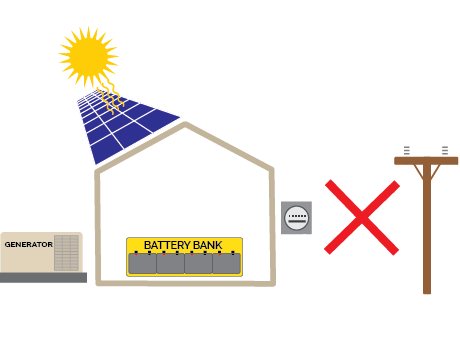
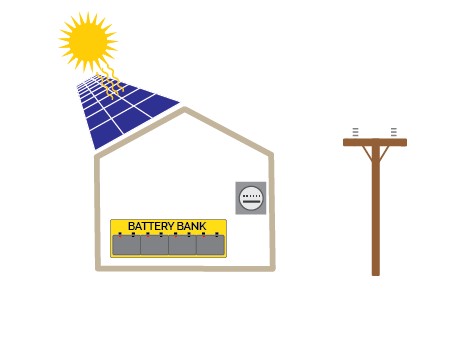
Grid-Interactive Solar Systems
A Grid-Interactive solar system is basically a grid-tied system with battery backup. This gives you the best of both worlds. It allows you to generate and store energy for your own use while still having the option of pulling power from the grid when you need additional power. This solution gives you the most flexibility of all three types in power availability, energy savings and backup power. The backup power gives you the capability or protecting critical loads such as refrigerators, fans, lighting, etc in the event of a grid outage. For an extra level of power security, a backup generator can be added as well.
Solar Mounting Systems
There are pre-designed solar mounting systems for just about every solar application. There are residential sloped roof mounts for all different roofing types from asphalt shingle and standing seam metal to clay tile and slate. There are also numerous systems for ground mounting as well as for commercial flat roof mounting and even solar car port systems.
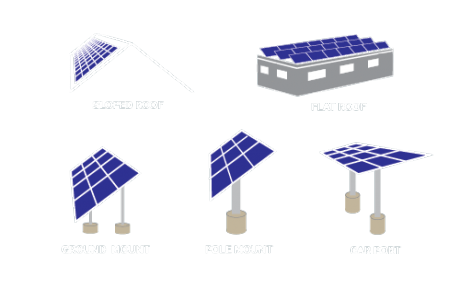
Solar Path: Azimuth & Altitude
To understand the best orientation for a solar array, its necessary to understand the path the sun appears to take as it moves across the sky. The suns position can be defined in terms to two angles: altitude and azimuth. The Solar Azimuth angle is basically the ‘compass’ direction of the sun adjusted for ‘true north’ as shown in the diagram. At any point during the day, the Azimuth angle of the sun will be the direction toward the sun. The Solar Altitude angle is just the angle between the horizon and the center of the sun in the sky. The altitude angle of the sun will be 0° at sunrise and increase until its highest point at midday then decrease as sunset approaches.
Solar Path Basics
As you already know, the sun rises in the ‘east’ and sets in the ‘west’. Of course this is only really the case during the vernal and autumnal equinox. During an equinox the sun rises at an solar azimuth angle of 90° (East) and sets at 270° (West) as shown in the diagram. The rest of the year, the sun will rise either north of east or south of east and set south of west or north of west.
At any location on the earth, the path of the sun through the sky is related to the Latitude of the observer. In the northern hemisphere, the farther you go north, the lower the peak solar altitude for a given day. During an equinox, the Solar Altitude at Solar Noon (Midday) is easily calculated as:
altitude at equinox = 90° – latitude°

Solar Path Extremes
During any given year the longest day of the year is the summer solstice which occurs around June 20th and the shortest day of the year is the winter solstice which occurs around December 20th. These also happen to be the days with the highest and lowest daily peak solar altitudes respectively.
As with the equinox, you can easily determine these altitudes based on the observer’s latitude. See the following:
winter solstice altitude = 90° – ( latitude° + 23.5°)
summer solstice altitude = 90° – ( latitude° – 23.5°)
For example, at 34°N Latitude, the highest summer peak solar altitude will be ( 90° – ( 34° – 23.5) ) = 79.5°
and the lowest peak solar altitude during the winter will be ( 90° – ( 34° + 23.5) ) = 32.5°.
The winter peak solar altitude is particularly useful when performing a shading analysis since that is the day with the lowest sun and the longest shadows.
Array Orientation
When looking at the Sun’s path over the period of a day, you will see that it reaches its highest point when its azimuth angle is directly south. This also happens to be the point at which the solar irradiation is the most intense. In order to take advantage of this irradiance, as well as optimize performance for both the morning and afternoon sun, we generally want our PV array facing due south.
For a fixed array, if we can’t orient the array directly southward all is not lost. When looking at performance related to the array azimuth as shown in the diagram, we don’t lose that much performance up to 90° either way. If our array faces due east or due west we only lose around 15% of our performance while southeast (135°) or southwest (225°) only losing 4% compared to due south.
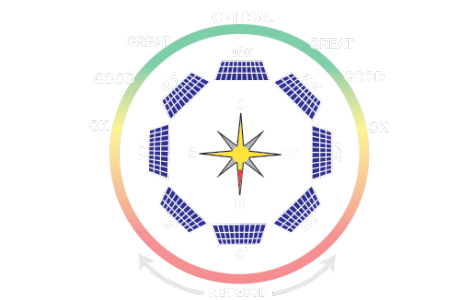
Array Tilt Angle
In addition to the azimuth angle, the tilt angle is also important to the performance of the PV array. Assuming a fixed title array, the optimal tilt angle will be about the same as the latitude of the array. So for an array installed at 34°N latitude, the array should optimally tilt at 34° off the horizon toward the south.
In some installations, the array tilt angle is decided for you. This is the case for sloped roof mounted systems. Luckily the most common roof slopes range from 22° to 37° which are very close to the optimal tilt angle for our area. Commercial flat roof mounting systems typically range from 0° up to 15° of tilt.
Even if you can’t get close to your optimal tilt angle, the loss in performance is still relatively small for being up to 50% off as shown in the diagram.
Shading, Weather and Soiling
Many factors may negatively affect solar system performance. Of these, shading is one of the biggest. A proper shade analysis will help determine if shading issues exist and what steps can be taken to alleviate the problem. Obviously weather may also affect the output performance of a solar system. More sun means more solar energy and more solar electricity. Note, however, that high temperatures may also reduce the output.
Another factor is soiling. If dirt, dust, leaves, etc builds up on your solar modules, this will affect output. Luckily a quick cleaning with a soft brush and water can make a big difference for a heavily soiled array.
NOTE: Never use detergents or pressure washers to clean your array.
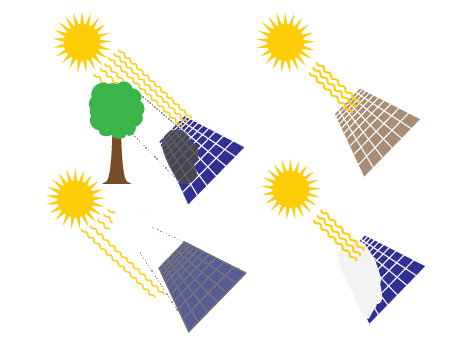
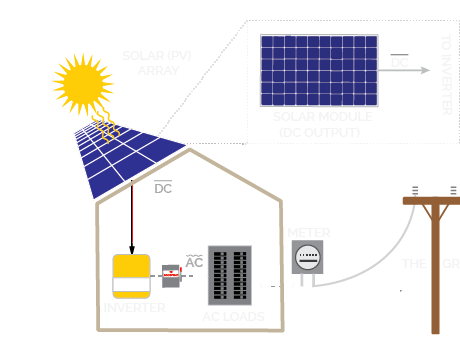
System Example: Grid-Tied with String Inverter
A grid-tied PV solar system with a string inverter is a very simple configuration using a minimum of system components. The primary components are the panels and inverter(s).
The panels are mounted on the roof with the inverter mounted in a serviceable location somewhere in or on the building. While the component makeup of the system is simple, string inverter systems require both AC and DC wiring which adds a degree of installation complexity. There are also potential performance issues when dealing with shading and there is no module level monitoring. The addition of DC optimizers can help solve shading and other module level issues as well as provide module level monitoring.
The latest versions of the National Electric Code also require rooftop arrays be Rapid Shutdown compliant. This means that the fire department can shutdown the array on or near the roof in order to protect firefighters from high voltages that may be present. String inverter systems may need additional equipment in order meet this NEC requirement.
System Example: Grid-Tied with Micro-Inverters
A grid-tied solar system with micro-inverters is also a relatively simple configuration. This type of system attaches a micro-inverter to each PV module (or possibly 2) rather than have a single inverter for a large string of modules.
Micro-inverter based systems have several benefits when compared to a simple string-inverter based system. The main benefit is that each PV module will always operate at its maximum power point independent of the operation of all of the other modules. This guarantees that the array will have better performance than a simple string inverter, especially in shaded conditions. The wiring is also simpler since there is no DC wiring to work with. The last big advantage is that micro-inverters provide module level monitoring. With module level monitoring, you can track the power/energy being generated by each module as well as easily point any problems that may occur.
Micro-inverters also provide for rapid shutdown compliance since they can automatically shutdown the array voltages when the power is turned off to the structure.
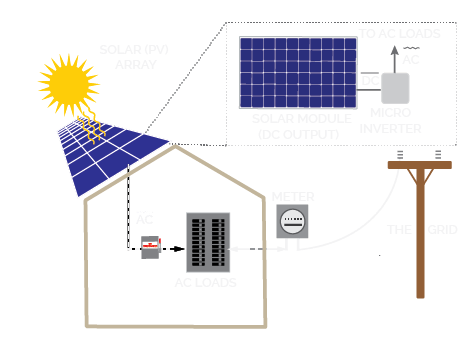
System Example: Grid-Tied with DC Optimizers
A grid-tied solar system with DC optimizers lies somewhere between a pure string-inverter based system and one using micro-inverters. When using DC optimizers, you place an optimizer unit on each PV module which will feed back to a string inverter. This gives you many of the same benefits as micro-inverter based systems such as maximum power output from each module as well as module level monitoring. There are times when a specific string inverter is necessary to meet design requirements. In many cases, using DC optimizers will result in a significant improvement in system performance over using a string-inverter alone. DC Optimizers generally also satisfy Rapid Shutdown requirements.
System Example: Grid-Interactive with Charge Controller(s)
A grid-interactive solar system is basically a grid-tied system with battery backup. When all is well, the system will keep the battery bank charged and offset usage while any excess solar power is sent back to the grid. When the grid is down, the system can operate off of the battery bank and PV array alone in order to provide power to the critical loads for the building. Some grid-interactive inverters even allow the user to limit the amount of power fed back to the grid and operate off of battery power in order to take advantage of ‘time-of-use’ power plans. Grid-interactive systems has many of the same design requirements as the off-grid systems so the design of these systems is much more involved than a normal grid-tied system.
In this example, the PV array is tied to one or more charge controllers that keep the battery bank charged and the battery inverter draws power directly from the battery bank.
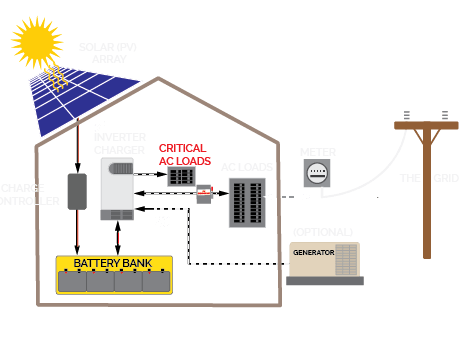
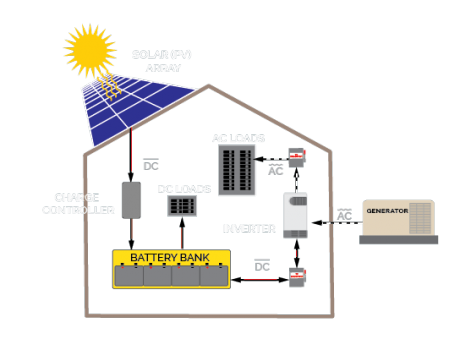
System Example: Off-Grid
An off-grid or standalone PV solar system is a self sufficient power generation system with power generated by a PV solar array while storing excess power in a battery bank for use during non-sun hours. An off-grid system will typically also require a backup generator in order to provide power during periods where there is not enough electricity generated from the PV array to meet the users power demands. Off grid systems typically use a charge controller to take power from the array and charge the battery bank while also feeding power to a battery inverter that generates AC power for use by the owner. An Off grid system may use a string inverters or micro-inverters in an AC coupled configuration. They may also use DC optimizers to help optimize individual module output and help alleviate shading problems.
Off-Grid Design Factors
Designing an off-grid system is significantly more complex than designing a grid-tied system. An off-grid design requires detailed analysis of energy usage, determining load priorities, of as well as estimating the number of days of autonomy. The power usage analysis includes a realistic estimation of the maximum power required at any one instant as well as the amount of energy each electrical device connected to the system will be used on a daily basis for each month out of the year.
System Example: Grid-Interactive with AC Coupling
An AC coupled solar system is a grid-interactive or off-grid system that has micro-inverters or another utility-interactive DC/AC inverter between the PV array and a battery based inverter. This type of system can enable the utility-interactive inverters to generate power even when the actual grid is down. AC coupling allows someone with an existing array to add a grid-interactive inverter at a later time without major modification to the existing solar system.
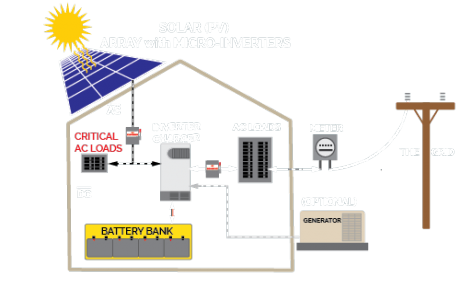
Solar Definitions
Alternating Current. This is a form of electrical current where the direction of the current reverses on a cyclical basis. US household current carries a target voltage of 120V and cycles at a frequency of 60 hertz. The actual AC voltage will vary depending upon the distance from the power source.
The Unit of measure indicating how much electricity is flows through a conductor.
A battery backup system stores electrical power from a source such as solar panels in order to be able to use that power to run electrical devices then the source is no longer available. This type of system can provide power during power outages or at night when no solar power is being created.
A device that takes DC output of a PV array or other power source and stores the energy in a battery bank. It monitors battery voltage in order to prevent over and under charging.
Direct Current. A form of electrical current that always flows in the same direction. The output of a typical solar panel is direct current. Batteries also provide a DC voltage.
A DC Optimizer is a small DC to DC converter that will dynamically monitor the output characteristics of one or possibly more PV Solar modules and adjust the voltage/current output of the module in order to ensure that the maximum possible power is being generated buy the module at any point in time. The voltage and current output of the optimizer may be significantly different from that of the panel however the power output should be very close to that being generated by the module with only a small loss due to the optimizer inefficiency.
Conversion of Direct Current to Alternating current. For any PV solar system that outputs household current (120V AC), a DC-to-AC inverter will be required.
The network of electrical transmission lines that connect electrical power plants and customers.
A Grid interactive system is a Grid-Tied system with battery backup. It allows the user to create and use all their own power but still have the grid available for additional power needs if the generation doesn’t meet demand.
A Grid-Tied solar installation is one that is connected to the power grid and feeds all unused power back into the grid.
A ground based solar system includes a frame or panel mounts that are on or near the ground rather than on a rooftop. These systems may be built using poles that are buried or screwed into the ground or racking systems that are weighed down by ballast blocks.
An electronic device that converts direct current (DC) to alternating current (AC). In the solar context, a PV inverter converts the DC electricity generated from Photovoltaic solar panels into the standard AC power and correct cycle to match the power that comes from your power company. The inverter output will be available to be fed back into the power grid for grid connected systems.
1000 Watts. This is the typical unit of measure of the amount of electricity needed to operate a given piece of equipment.
A Kilowatt Hour is a measure of energy. 1 kWh is equal to the energy required for a 1kW device operating for 1 hour or a 1W device operating for 1000 hours.
A small DC to AC inverter that can convert the output of as few as one solar panel to AC power. Micro-inverter based systems have the advantage of handling shade, debris and snow better than string inverters.
North American Board of Certified Energy Practitioners (www.nabcep.org) This organization certifies solar professionals using very stringent testing and training requirements.
Net metering is a policy supported by an energy provider that allows an energy consumer to offset their power usage through on-site energy generation during a given billing period. Different utilities have different policies for net metering.
National Renewable Energy Laboratory. (www.nrel.gov). This organization provides a variety of tools, simulators and historical data sets that are useful to both consumers and solar professionals alike.
An Off-Grid solar installation is one that uses a battery bank in order to store the energy from the solar panels then supplies all power to the location. These types of systems are not connected to
the power grid so the power usage must be adjusted to match the available power generated by the
solar panels.
An inverter system that maximizes the output of a PV array through something called Maximum Power Point Tracking (MPPT). Different optimizing inverters implement this in different ways but the overall effect is to overcome the effect of shadowing and/or reduce the size of wires required to carry power from the PV array.
The Photovoltaic Effect is the process which converts light into electrical current.
Acronym from Photovoltaic. Meaning the process or generating an electric current/voltage from electromagnetic radiation, in particular visible light from the sun.
Energy coming from a natural resource that is never used up or can be replenished by growing more in a timely manner. In our case, the sun…
A solar panel mounting system that allows for panels to be mounted on the roof of a building. The type and angle of the roof must be taken into account as there are specific types of mounting hardware for each type and configuration of roof.
Operated by energy derived from the sun, may be Photovoltaic or thermal in nature.
A photovoltaic device that converts light directly into electricity. Currently, solar cells are made of thin layers of charged silicon. When light penetrates the cell, it causes electrons to break away from the positively charged silicon layer generating an electric current.
A photovoltaic solar panel, also known as a PV Module, is a large group or interconnected collar cells. Each cell is capable of generating a certain voltage/current. The cells are connected in a manner that generates the optimal output for use in generating usable power for residential and commercial use.
A string inverter is a DC to AC inverter that takes DC input from a large number of solar panels into standard single phase or 3 phase current.
Measure of electric potential. Voltage applies to both Direct and Alternating Current (VDC & VAC). Standard house voltage in the US is split phase 120/240 VAC.
Electrical measure of power at a point in time. This is equal to volts times amps (Watts = Volts x Amps).
Have questions ? Need a Quote ?
Call Us to speak with one of our solar consultants.